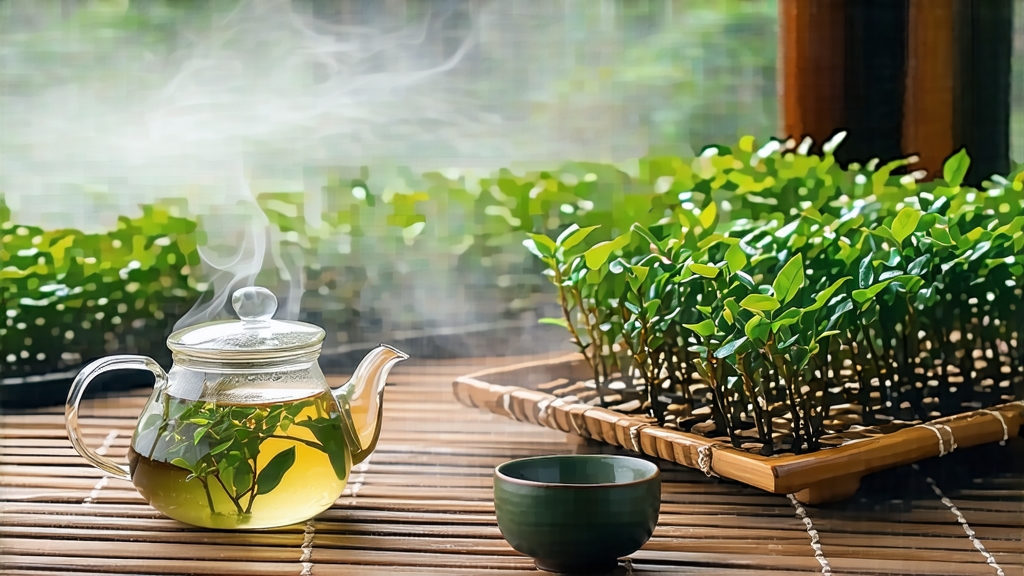
Biluochun, whose name translates literally to “Green Snail Spring,” is one of China’s ten most celebrated teas, yet it remains a delicate secret outside serious tea circles. Grown on the mist-locked, fruit-tree-capped hills that rise from the eastern shore of Taihu Lake in Jiangsu Province, this emerald-spiraled green tea carries within its tiny, tightly rolled leaves the perfume of apricot blossoms, the sweetness of lake air, and six centuries of imperial lore. To understand Biluochun is to listen to a soft-voiced story that begins in the Ming Dynasty, when a young tea picker, startled by the sudden fragrance of tea mixed with the scent of wild fruit trees, cried out “Xia Sha Ren Xiang”—“scary fragrance.” The name stuck until the Kangxi Emperor, touring the south in 1699, found the tea so jade-green, so curly, and so irresistibly fragrant that he rechristened it Biluochun, “green snail of spring,” evoking both its shape and the season that gives it life.
History, however, is only the first infusion. Biluochun is defined by micro-terroir: a triangle of hills no larger than 20 km² where the lake’s humid breath meets subtropical sunlight filtered through peach, plum, and loquat canopies. These fruit trees bloom at the same time the tea bushes flush, and their pollen drifts onto the downy buds, imprinting a natural fruity note that no other green tea possesses. The highest grade, Mingqian Biluochun, is picked for only ten days before the Qingming festival, when each shoot is still a single unopened bud and the adjacent half-leaf, no longer than the width of a thumbnail. Pickers work from 5 a.m. to 9 a.m., before the sun burns off the mist and the leaf’s aromatic esters volatilize. A skilled picker can finish barely 500 grams of fresh leaf in a morning; it takes 60,000 buds to yield one liang (50 g) of finished tea.
The crafting of Biluochun is a three-hour choreography of heat, hand, and timing that has changed little since the Ming. First comes “shaqing,” a gentle pan-firing at 180 °C for three to four minutes. The tea master tosses the gossamer leaf in a wok just hot enough to halt oxidation yet cool enough to preserve the downy hairs that give the dry leaf its silvery sheen. Next is “rounian,” the spiraling: while the leaf is still warm and pliant, the master rolls it against the wok’s wall with a pressure no heavier than the weight of a silver coin, coaxing the bud into its signature spiral shell shape. Finally, a low-temperature “hongbei” drying phase locks in fragrance and reduces moisture to 5 %. The entire process is finished by noon the same day the leaf was picked, ensuring that the tea’s volatile floral compounds—linalool, geraniol, and β-ionone—remain trapped inside the curl until they meet hot water in your cup.
To brew Biluochun is to negotiate delicacy. Its cell walls are thin, its catechins abundant; water hotter than 80 °C will scald the leaf and release an astringent bitterness that masks the apricot-sweet lift. The classical Jiangsu method uses a tall, thin glass called a “gai-bei” (lidded cup) so the drinker can watch the spirals unfurl like miniature fern fronds. Begin by warming the glass with 75 °C water, then add 3 g of tea—about a heaping teaspoon—per 150 ml. Pour the water in a slow, thin stream so the leaf is lifted and tumbled, not bruised. After 45 seconds the buds will sink, releasing a pale champagne-liquor with a scent that marries hyacinth, fresh peas, and a whisper of white peach. Decant fully to avoid over-steeping; the same leaves will yield four more infusions, each a shade greener and a note softer, until the fifth tastes like sweet spring water that remembers it once held a flower.
Tasting Biluochun demands the same quiet attention given to a fine Riesling. First, inhale the “ganxiang,” the dry aroma: bury your nose in the warmed gai-bei and breathe slowly; you should detect a cool, almost minty top note layered over baked pear. Next, the “tang